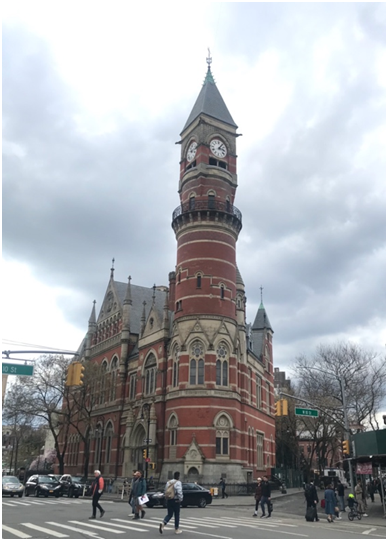
It is finally Friday and it has been a long week. There is a new COVID variant, again. The Turkish lira has depreciated, again. Archival documents on sürgün (exile) have led me down the path of readings on forced labor and incarceration that are part of an interconnected system of crime and punishment that I am trying to understand and reconstruct.
It is not the most uplifting of topics. After many trips to the Ottoman Archives, I have acquired thousands of documents that I wish I could read with a coterie of elves trained in Ottoman paleography. Unable to summon them to my aid, I sit down with a coffee and start reading a book on crime in the long nineteenth century. I realize that instead of my Redhouse Ottoman lexicon, I need a modern Turkish dictionary to make sense of English terms translated into academic Turkish. I write down these new words and wince as my pen hits the paper and produces ligatures for terms like “yöntembilim” (methodology) and “zamanbilimsel” (chronological). I wonder what my mother would think of these words and laugh at the prospect of trying to explain them to her—an Istanbulite whose Turkish was suspended in the late 1960s when she emigrated to America—and imagine a scene that would not be out of place in an Ahmet Hamdi Tanpınar novel or Refik Halit Karay story.
On the ANAMED terrace, my thoughts drift in line with the clouds, which are now overtaking the sun and seem intent on sending me indoors. Instead of my room or the fellows’ study space—both of which come with musical accompaniment from Istiklal Caddesi and her many side streets—I head to the American Research Institute in Turkey (ARIT) collection within the ANAMED Library. I say a silent hello to the books and wonder how they’re doing—a habit from childhood, when I thought that all books had feelings. Back then, I frequently visited the Jefferson Market Branch of the New York Public Library, which was in a whimsical West Village building that reminded me of a castle. Thinking of how far I am from the places of these memories, I wish it were possible to trace the path of the volumes all around me as they traveled from warehouses, personal collections, and sahhafs to the former ARIT library in Arnavutköy, and then to ANAMED’s home in Merkez Han. I remember when it was possible to see who had borrowed a book before you, and to read their name—often written in cursive, on a card pasted into the back pages or cover of the volume. I suddenly realize how long it has been since I have been able to work in a library, and how much I have missed it. The stacks—which magically extend by way of inter-library loan and the matchless work of librarians—offer something that has been in short supply since 2020: hope and possibility.
Indeed, I had not been able to go to a library for over two years. When the pandemic hit New York, I lost privileges at my alma mater, and the library of my public university only reopened as I was preparing to leave for Istanbul for the fall 2021 semester. Despite the ease of downloading books online or the chance to buy new titles and add them to a growing collection in my small Brooklyn apartment, I had not realized how much I missed the joys of being in a space dedicated to their perusal, and of searching stacks for a single call number and browsing the titles of neighboring tomes. With so much of my life shifting to a virtual world, I had missed the feeling of picking up heavy bound journals and thumbing through years of articles, and learning answers to questions I had not realized I had.
In a notebook illustrated with songbirds, including a hoopoe—a bird that became my favorite after reading Fariduddin Attar’s majestic The Conference of the Birds in an undergraduate literature course with Talat Halman—I make lists and write down pages and pages of notes. Books to check out, articles to look up, lines of inquiry to pursue. I create a path forward with research, thinking about the memoirs, legal codes, and studies that will help me to write a new history of exile. I thumb through articles and think about the many losses that exiles endured, including separation from their books. Questions lead to questions: How had exile evolved in the nineteenth century? Who ultimately determined where one would be sent? Why did some people end up in fortresses on the Black Sea and others in the Mediterranean? How had persons been cast out as problems, then later been pardoned or reclaimed as loyal subjects? How had a culture of exile reproduced itself, so that people once banished would mete out this punishment on their own opponents? What had happened to those whom exiles were forced to leave behind?
I find myself building a little fortress of books on the desk, all the while wondering what it was like to be in Sinop or Rhodes or any number of places that I am continuing to learn about. I realize that the library has become a refuge from the pandemic and a place of inspiration. I write a note to myself to share this experience with my students when I return to teaching, and to try to explain how learning can be an act of hope in difficult times. I write a second note: to tell my students to visit a library. I hope that in New York, I can get them to fall in love with a library, perhaps for the first time.

